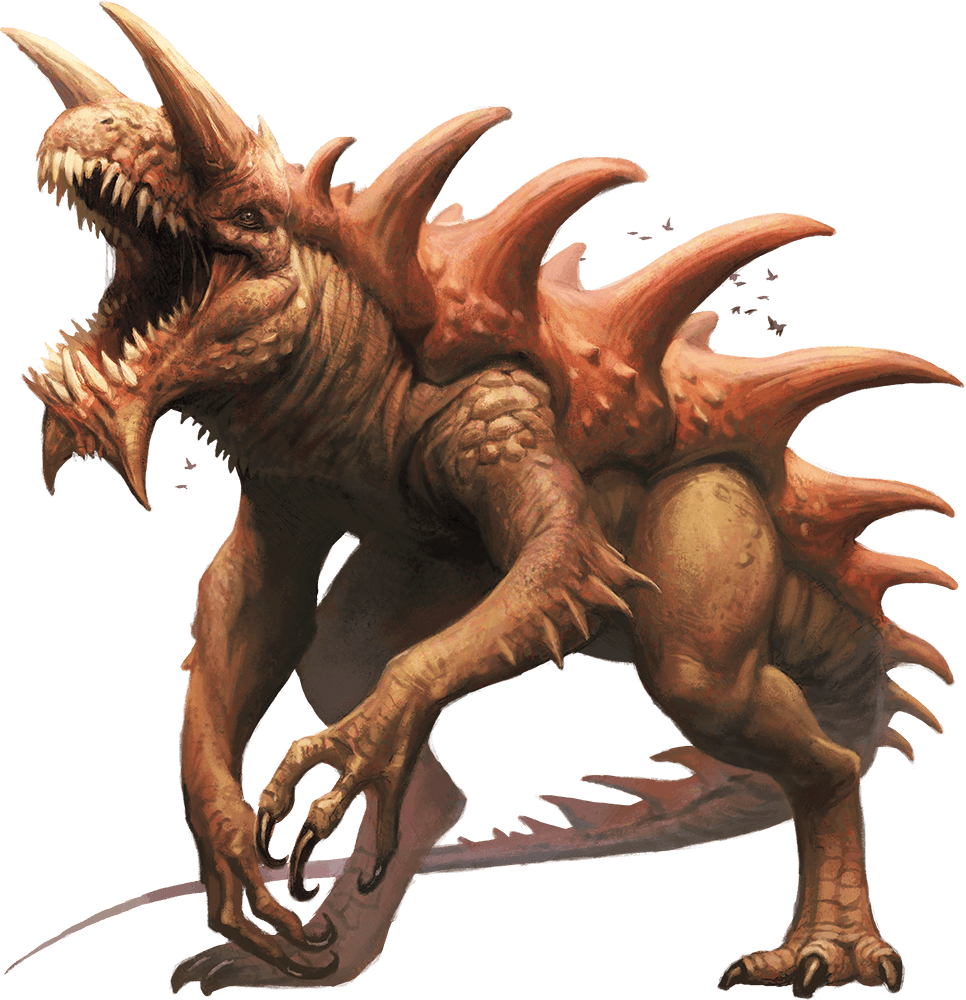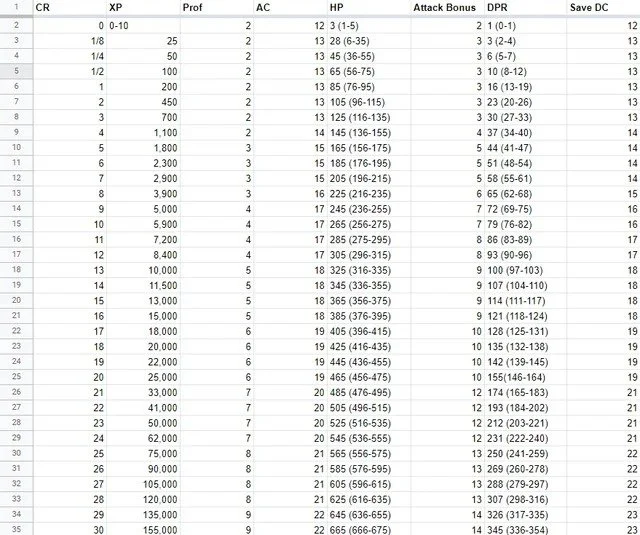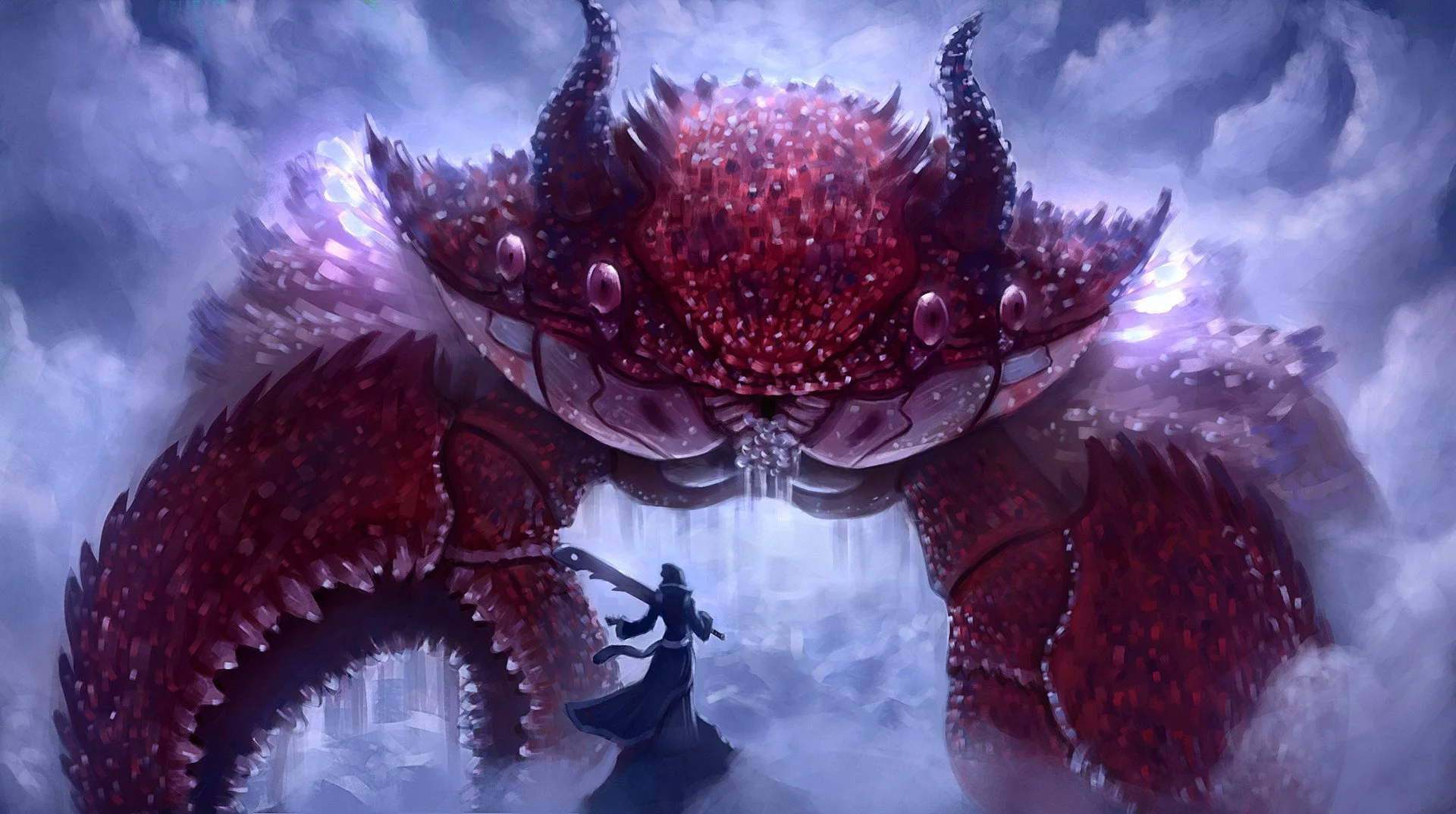Creating Epic Monsters
What Is an Epic Monster?
The Tarrasque
Monsters in Dungeons & Dragons are ranked using a system called Challenge Rating (CR), which helps GMs gauge how tough a monster is to fight. This scale runs from 0 (think: one measly rat) to 30 (say hello to the legendary Tarrasque). It’s a helpful metric—most of the time. There are exceptions: monsters like Shadows that sap ability scores can mess with low-level parties, and players packing wild magic items often punch way above their weight class.
Here at the Foundry, we tend to play extremely high-level campaigns. We build broken playable characters, homebrew our own items and boons, and—most recently—broke Spelljammer’s balance across our knees to homebrew a massive, crafting-heavy setting. The side effect? Our GM (and resident monster masochist) Steven has to make monsters that are, to put it lightly, bananas.
When we started designing some special stat blocks for Slick’s Field Guide to the Paracosm, we quickly realized: CR 30 just wasn't cutting it. We weren't making monsters that matched existing CR 30s. We were making monsters that could squash them.
The Ceiling Isn't the Ceiling
Here’s the thing about CR 30: it’s not the real limit. It’s just where the measuring tape ends. So what do you do when your monster bursts right past that?
You raise the roof.
Steven and I leaned in. We weren’t going to tone these creatures down. That would’ve betrayed what made them thematically epic. Instead, we embraced it—and the idea of Epic Monsters was born.
These are monsters for level 20 parties with all their toys. They’re god-level threats. And they exist because more and more tables don’t play with the “adventuring day” constraint. These monsters assume your players are coming in at full throttle… and still make them sweat.
TL;DR:
CR 31–50 monsters.
Threats beyond what 5e officially provides.
Meant for high-level, resource-rich parties.
What Is an Epic Monster?
An Epic Monster is any creature with a calculated CR between 31–50.
For this, we use an expanded CR calculation table based on work by u/Azuria1 on Reddit, who did an amazing job doing the math for high-end design.
Common Traits:
Up to 5 Legendary Resistances
Multiple damage and condition immunities
Powerful and unique Legendary Actions
At least one “special sauce” mechanic (save-or-suck ability, environmental control, weird interaction, mythical traits, special reactions, artifact level magic item, etc.)
We also created a new size category: Titanic. These creatures take up a 40x40 ft space or larger and can only be grappled by other Titanic creatures. Not all Epic Monsters are Titanic… but all Titanic monsters are Epic.
What Makes Them Epic:
World-altering power
City-level destruction potential
Reality-warping abilities
An encounter designed to feel larger than the party
These monsters should feel like events, not just fights.
Why Use Epic Monsters?
Epic Monsters aren’t for every campaign. But when you need one, you’ll know. Here’s when they shine:
Campaign Openers:
“Not every tool in the GM toolbox needs to be a hammer. But if you do need a hammer… you might as well bring a meteor.”
Imagine a level 1 party watching helplessly as an Epic Monster battles a greater threat. The monster ignores them entirely, but the town burns around them. Use these creatures as set pieces, as forces of nature. It gives players something to work toward… or run from.
Campaign Finales:
Your party started in a tavern. Now they’re here to kill a god. Epic Monsters make excellent endbosses for campaigns with a high-magic, Final Fantasy-style crescendo. These are creatures you call on when your players have seen everything else.
Let’s Make Some Monsters
Let’s wrap this post with two free Epic Monsters for your table, including a full breakdown of their mechanics. We’ll explain the steps as we go—yes, even the gross math part.
Carcineo, the Ascended Claw (CR 32)
Carcineo was built to embody the feeling of fighting an eldritch sea god. Designed for a homebrew world that will referenced in Slick’s Field Guide to the Paracosm, it’s a Titanic aberration meant to instill dread through presence, disruption, and raw power. I took cues from classic kaiju and deep sea horror. This statblock has drawbacks that allow for a more intense back and forth fight. It is less about speed, more about inevitability.
Mechanically, it introduces a unique anti-magic zone through Gossamer Eater that forces casters to play dangerously close. Carcineo’s control over terrain and magic serves both a mechanical and thematic role: the battlefield warps as reality unravels around it. With regeneration, reach, and layered immunities, it presents not just a boss—but a siege.
Its mythic phase, "Emerge Ascendant," was inspired by boss fights that escalate midway. By breaking its own shell and expanding its null field, it forces a new strategy shift—daring players to either end it quickly or be consumed.
This is not a fight meant for the average level 20 party. This is a cinematic, campaign-ending clash—the kind of monster Slick might casually warn you about with a grim chuckle and a last will and testament already notarized.
general Darlene, the Black Knight Hag (CR 39)
General Darlene is a concept I’ve wanted in my games forever. Picture this: a Night Hag polymorphed into a beloved general—leading an unstoppable army, adored by her people, and secretly orchestrating an empire built by a coven of hags in the shadows.
Her magic isn’t flashy—it’s tactical. With a hearthstone embedded in her longsword (called The Braided Heart), she uses nightmare magic to sabotage enemy commanders. Those who survive her psychic onslaught find themselves face-to-face with a battlefield juggernaut.
We’re stealing a bunch from the SRD Night Hag: Innate Spellcasting, Etherealness, Nightmare Haunting, etc. We’re boosting her CHA to 21 and stacking resistances (immunity to non-silvered weapons and fear). Then comes her special sauce.
The Braided Heart:
Darlene can take two reactions per round. If she hits with her sword, she regains a reaction. One of her Legendary Actions—"Reflex"—lets her recover both reactions at once.
She also gains three special reactions:
Counterspell (5/day)
Eyebite (1/day)
Martial command mechanics that allow her to nullify reactions of others or take battlefield control-style responses.
The result? A commander who controls the flow of combat like a war god in disguise.
Final Thoughts
“Epic Monsters aren’t about balance—they’re about scope. When used right, they elevate your story, terrify your players, and let level 20 feel earned again.
Want more monsters like this? Let us know. And if you use Carcineo or Darlene at your table, tag us—we want to see what survives.
Let’s make some monsters.”




